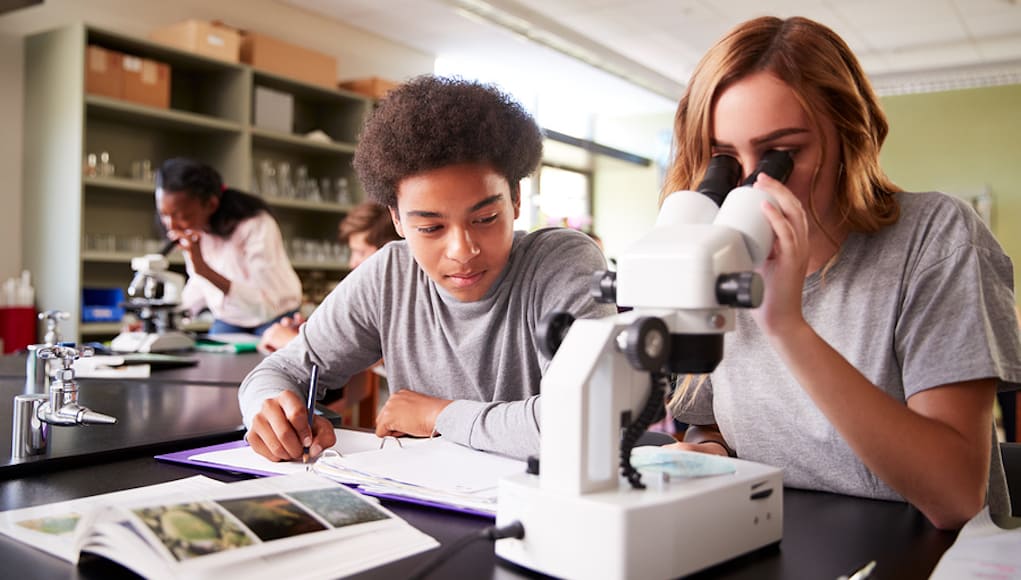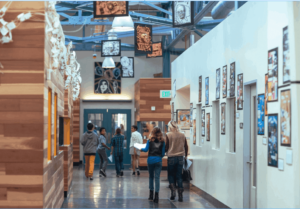The Development of High-Quality Project-Based Learning

By Kaii Zecchin
Over the past four years, I have run various project-based learning (PBL) experiences in my Upper Primary (Grades 5, 6 & 7) classroom. With each passing year, I have improved the way I deliver the initial hook lessons, so as to best prepare my students for the process that is required for these long-term projects.
First Time PBL
The first time I ran a long-term PBL experience was a few weeks into winning my first full-time position in a classroom, only 6 months after completing my teaching degree. I threw my students into groups almost to prove they were being collaborative and set them on their way to investigate ideas I believed to be authentic. Looking back now, the way I set up the experience and supported students was the reason they performed so poorly. I was trying to force this new framework for students who had never learned in such a way. Since this first PBL lesson, I have amended my approach for how I introduce project-based learning each year, based on the previous year’s experiences. I am always adjusting the way I teach, and each new group of students I have worked with have gradually improved in the way they tackle the task, with 2018 being the best year yet.
 High-Quality PBL Resources
High-Quality PBL Resources
This year, prior to setting up the PBL lessons with my students I made an effort to more thoroughly investigate what high-quality project-based learning looked like to ensure my students received high-quality experiences. In Australia, there has been a fantastic push for integrating STEM learning into classrooms over the past 12 months; however, our curriculum is still not written in a way that encourages integrated learning of other core learning areas. This meant that my search for Australian PBL resources was a bit of a dead end (I did however come across some fantastic Australian teachers who are implementing PBL in their classrooms!). I had discovered the Buck Institute for Education in previous years, so with some searching (and help from Twitter – one of the best ways to connect with like-minded educators) I found two more resources that stood out to me as being the most useful for what my students and I were trying to achieve – the Framework for HQPBL, and the High Tech High website which models some fantastic PBL done by their students.
Following the HQPBL Framework, this year I had students commence their projects using the Collaboration aspect. With students working independently on their projects, the collaboration component was brought into this PBL experience by initially working with all students as a larger group to identify the curriculum strand they wished to have as their primary focus. This curriculum strand formed the basis for our overall driving questions, which were again devised by students in a collaborative effort. My class consists of two grade levels, both of which decided to focus on the Geography strand of the HASS curriculum. The Grade 6’s created their driving question around the theme of Cultural Diversity and Indigenous People, while Grade 7’s devised a driving question on Liveability.
Throughout their beginning research phase, students were reminded to try and develop a more specific project question that was authentic – relating to a problem that really needed to be solved and also connected them to their wider community or world. This process also incorporated the intellectual challenge component of the framework wherein students narrowed down their focus to something that was going to sustain their interest while also challenging them academically for an extended period of time. While some students were able to narrow down a focus question relatively quickly, some students changed their ideas a number of times over a number of weeks. Students enjoyed being able to see projects done by other students at High Tech High to gather some inspiration.


“I sent out seventeen emails to different museums (across Australia and the world)… and got 6 responses. With this information, I came up with a list of things which should be implemented in my museum model.” Grade 6 student – designed a new museum layout to be more inclusive of multiculturalism.
In previous years I have been more heavily involved myself in helping students Project Manage their time and workload throughout their PBL. This year, after supporting them through the process of defining their challenge in the beginning stages, I stepped back. My students were reminded that I was available for support, and while some initially struggled to manage their time and workload they eventually found their groove and I found I was not needed very often.


“I felt boredom and pressure nearing the end of Term 2 because I was stuck on what my question would be. None of my previous questions worked because there wasn’t an information source that was specific enough for my needs. Then I told Miss Zecchin I needed something that pulled me in for my focus question. She asked me – “Would it help if it was music based?” You kinda know what happened from there.” Grade 6 student who created a Syrian Oud with materials he found at home, to replicate what would be available to them in a refugee camp.
Also different from previous years was the fact that my students created Public Products. Over the course of the 15-week project students shared their progress with peers and other teachers, and when presenting their final products they were encouraged to reach out to an expert and invite them to the school as an authentic audience. The students did this well and our invited audience members varied greatly in their expertise. Audience members included the collections manager from our state museum, our local federal MP, guitar experts, people with knowledge of indigenous cultures, local residents and community members as well as various teachers and heads of school.

“It was nerve-racking at first, presenting my PBL to a federal MP. But once we got into a deep conversation with her it was really great. She knew so much about my topic already because she is in politics, so she was great to get feedback from.” Grade 7 student who developed a magazine and pitch for politicians to help support North Korea becoming a more livable region.
Success
Myself and other audience members have been blown away by what the students produced this year as a response to their PBL research. Their final products and presentations clearly display the hours of hard work and passion that the students poured into these projects. Each project is unique in its focus, and all display levels of individuality, innovation, and creativity. I look forward to taking this HQPBL framework with me into future years.
For more, see:
- What Does HQPBL Look, Sound, and Feel Like in a General Education Classroom?
- Students Learn Project Management From HQPBL Experiences
- Defining High-Quality Project-Based Learning
Kaii Zecchin is a primary school teacher in Australia, follow her on Twitter @kyj3n.
Stay in-the-know with all things edtech and innovations in learning by signing up to receive our weekly newsletter, Smart Update.




inquirED
Love this thoughtful approach to inquiry-based learning and Kali's development of her inquiry teaching practices over the past 4 years. Especially love the addition of the public products, it's so important to share with the public to develop student voice, and include action as part of the process.